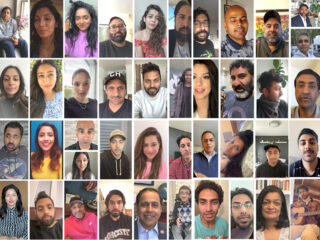Conflict with loved ones is unavoidable. If anything, conflict is useful, provided that it’s taken as an opportunity for both personal and relational growth, and not allowed to devolve into a heated argument. But how do you utilize conflict in this way? These five tips may help.
1. Use kind physical affection.
A gentle touch is often enough to “reset” a person’s mental circuitry and ease them out of their heightened emotional state. But keep in mind that not everybody responds to physical touch in the same way.
If your partner is someone who may only be further triggered by physical contact, focus on using loving body language instead: point your feet toward the person, relax your arms by your sides, and make eye contact.
2. Use humor.
Laughter is a great equalizer and can be a useful tool to snap someone out of a defensive and angry mindset. A tactful joke or even a strange, out-of-left-field noise (try mooing like a cow) can de-escalate both of you, bringing you out of woundedness and into a more loving state.
But read your partner and yourself carefully: if your humor is mean-spirited or if your partner only appears further triggered, then back off.
3. Establish a “time out” rule.
Sometimes, the most loving thing you can do is create some space, both physical and temporal, around the argument. This allows both partners to disengage, self-regulate, and then re-approach the conflict later on from a state of mutual respect instead of emotional reactivity.
If possible, discuss with your partner beforehand a specific word, phrase, or gesture you can use during future arguments. This can be as direct as saying “I need five minutes” or making the universal time-out sign (hands in a T-shape). Just be sure that both of you reconnect later to work through the issue.
4. Repeat what the other person is saying.
Restating key things your partner says (in a genuinely interested way, not a childish mimicking way) shows that you’re listening, which is critical. It also offers a helpful jumping off point for both of you to re-examine and re-frame your needs and make sure you’re being clear.
5. Use the “my story” framework.
Your feelings and thoughts are completely valid, and you are free to express them—as is your partner. By framing your concerns with the opener “The story I’m telling myself about this is….”, you can advocate for yourself without coming off as accusatory, and help your partner understand your perspective.
Matchmaker & Dating Coach: Jasbina Ahluwalia

DOWNLOAD FREE Checklists from Jasbina: How To Connect On A First Date – 6 Secrets From A Matchmaker. [Checklist 1] Connect With A Man / [Checklist 2] Connect With A Woman.
To learn about Intersections Match by Jasbina please visit – www.IntersectionsMatch.com. Jasbina can be contacted at info@intersectionsmatch.com.










